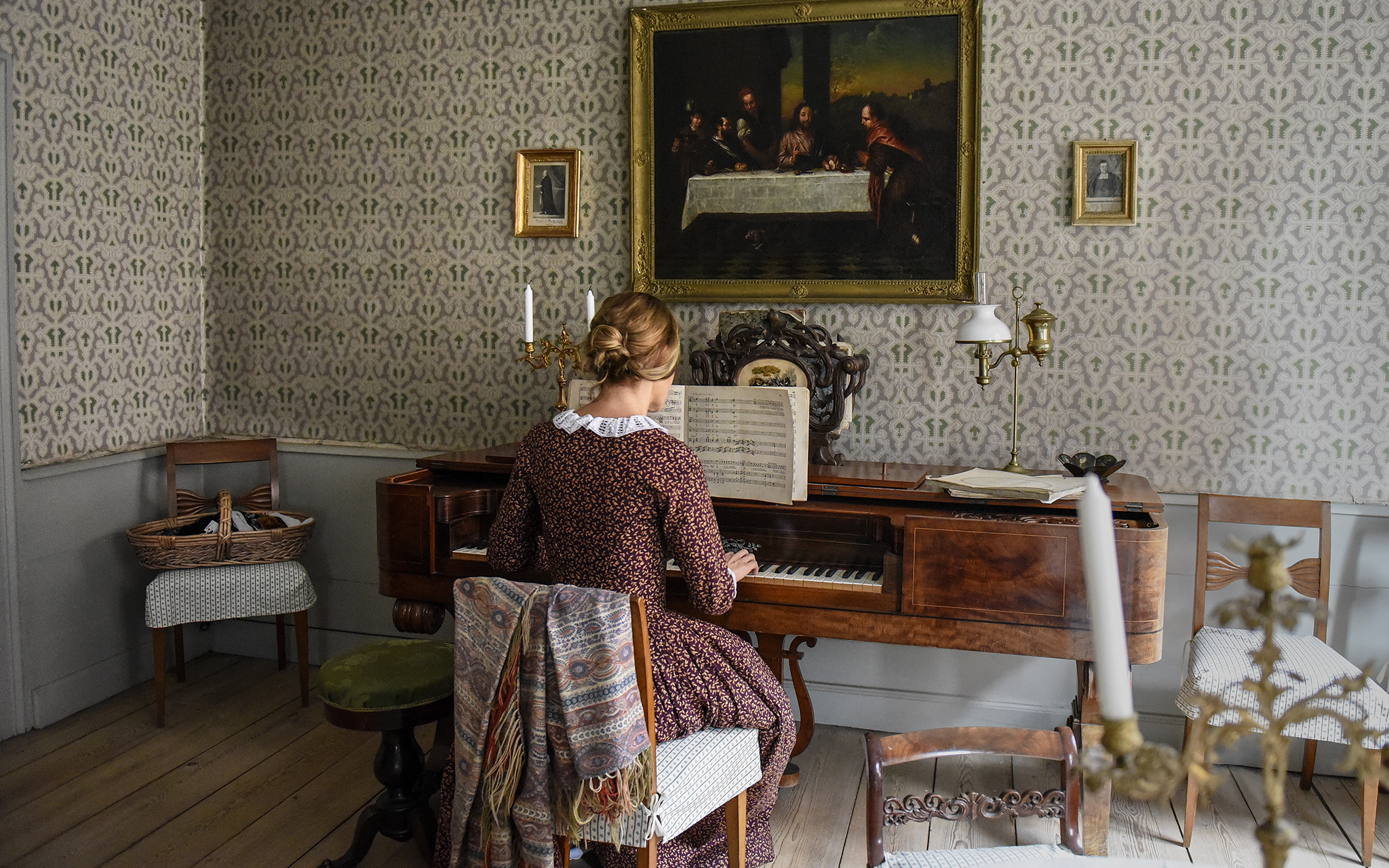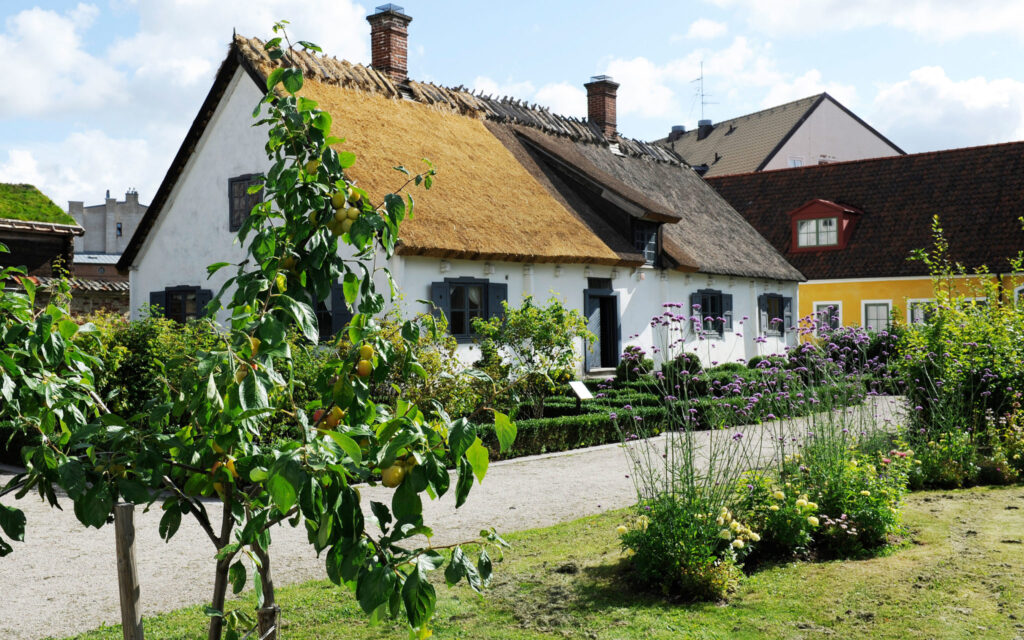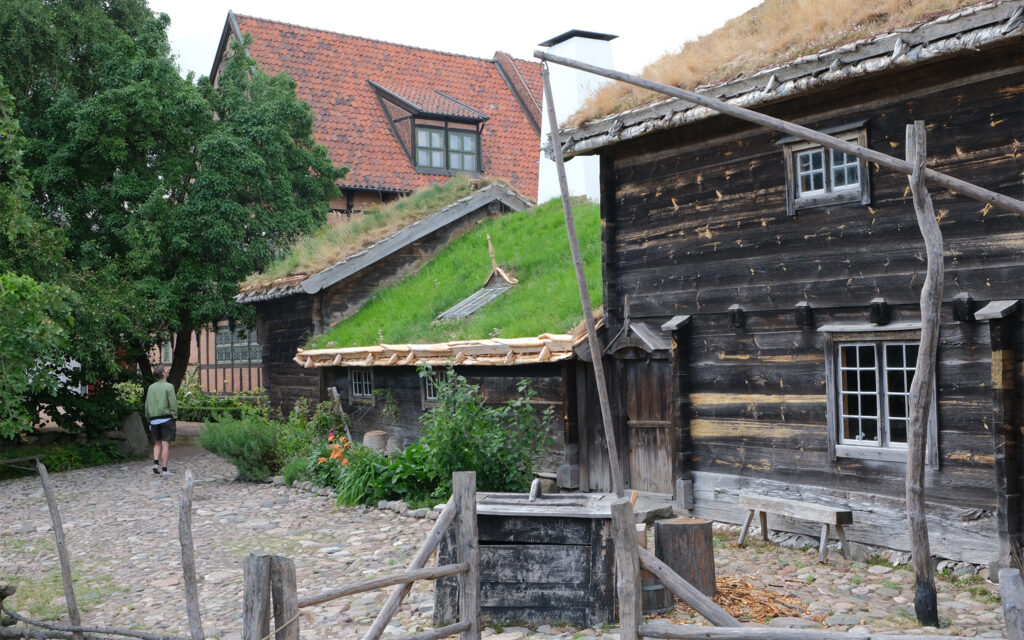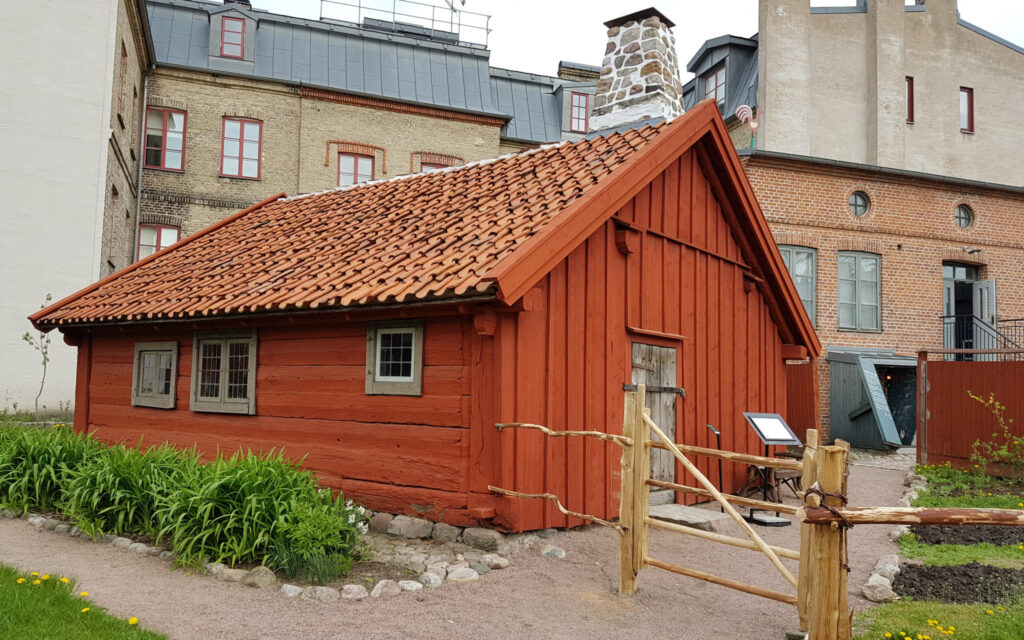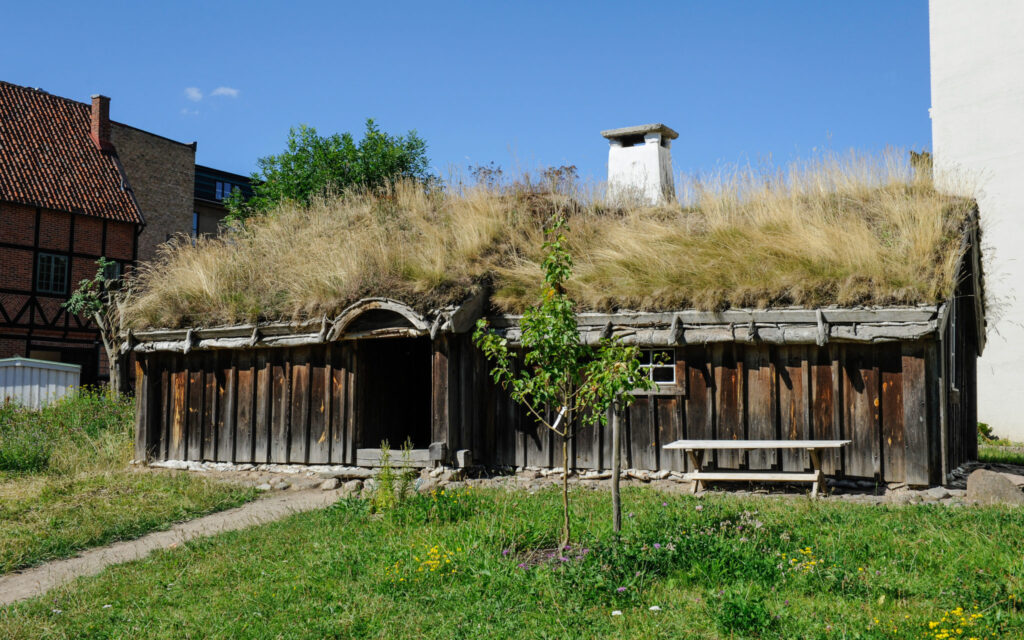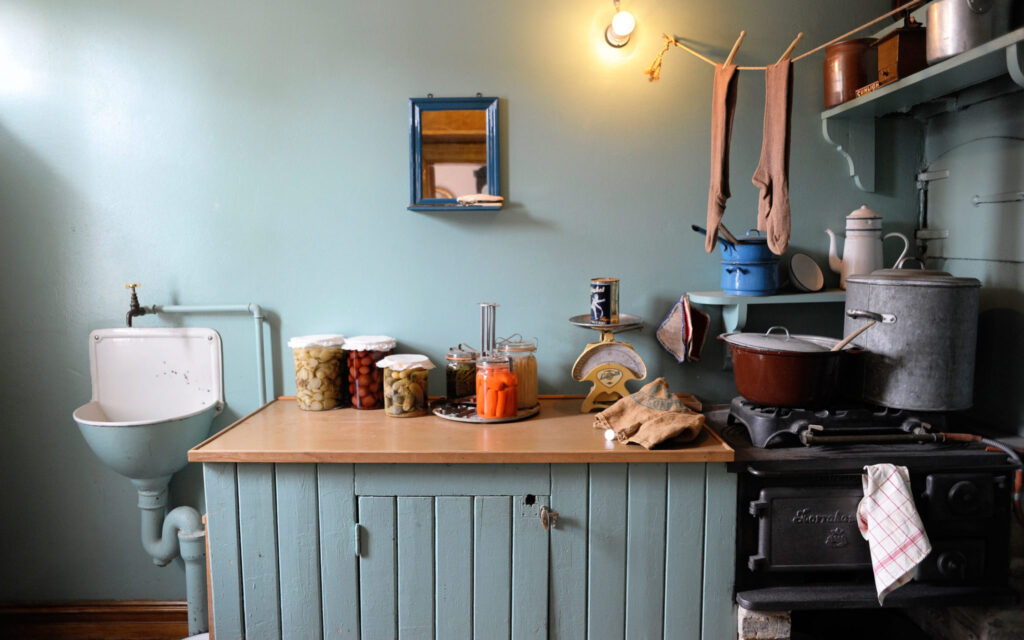This grand, slate blue house originally stood on Paradisgatan, just a stone’s throw from Kulturen. Professor Johan Henrik Thomander moved in during the autumn of 1833. A few months later, he married Emilie Meyer, and the couple lived in this house until 1850. They had three daughters as well as a foster daughter. Come and take a look at their home!
From the hallway, you can see the dining room on your right. The table has been laid for a dinner party. A meal like this could consist of soup, aspic, poultry paté and roast veal. For dessert, perhaps fruit kissel or sugared rosette fritters.
Continue onward to the maid’s room. The room to your right is the drawing room – the family´s living room. Notice the raised platforms by the windows? These allow you to get away from the draught, and bring you closer to the daylight. Here, you can watch the world go by and be seen from the outside at the same time.
Beyond the drawing room is the master bedroom. Did they really fit in that bed? Yes, it’s extendable. This way, there was more space to move around during the day. Emilie liked to sit by the window and write. The next room was Johan Henrik’s grandmother’s bedroom, and further along is the kitchen and the spacious larder. There was no fridge or freezer, so food had to be preserved and stored to last for a long time.
Go back the way you came and take the stairs to the next floor. The first thing you will see is the professor’s library. There are around 7,000 volumes, in several different languages.
The reception room was used for hosting parties or receiving guests. It was unheated and cold when not in use. At the far end, you can take a peek into the music room. Every well brought-up girl had to learn how to play the piano and sing.
Further reading:
The booklet Kulturen Open-Air Museum provides more information about the Thomander House and the other buildings included in this tour. It is available in the museum shop for 60 SEK.
